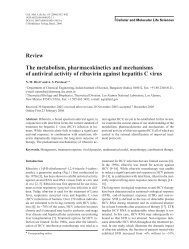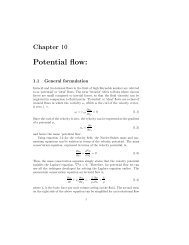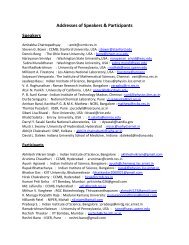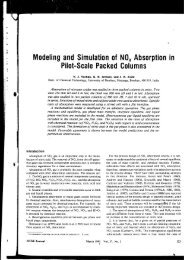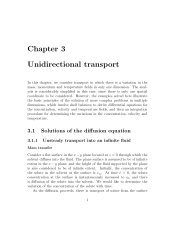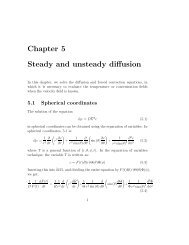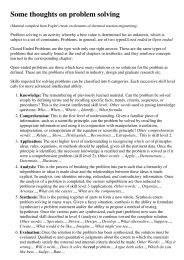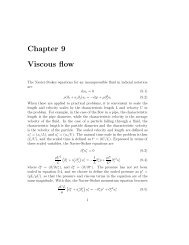Chapter 11 Boundary layer theory
Chapter 11 Boundary layer theory
Chapter 11 Boundary layer theory
Create successful ePaper yourself
Turn your PDF publications into a flip-book with our unique Google optimized e-Paper software.
7<br />
∂u x<br />
∂y<br />
∂ 2 u x<br />
∂y 2<br />
=<br />
U ∞<br />
(νx/U ∞ ) 1/2 d 2 f<br />
dη 2 (<strong>11</strong>.31)<br />
= U2 ∞<br />
νx<br />
d 3 f<br />
dη 3 (<strong>11</strong>.32)<br />
Equations <strong>11</strong>.29 to <strong>11</strong>.32 are inserted into the equation <strong>11</strong>.19 to obtain, after<br />
some simplification,<br />
d 3 f<br />
dη + 1 3 2 f d2 f<br />
dη = 0 (<strong>11</strong>.33)<br />
2<br />
This is the ‘Blasius boundary <strong>layer</strong>’ equation for the stream function for<br />
the flow past a flat plate. This equation has to be solved, subject to the<br />
appropriate boundary conditions, which are as follows. At the surface of the<br />
plate, the no-slip condition requires that the velocity components u x and u y<br />
are zero. Since u x is given by equation <strong>11</strong>.28, the condition u x = 0 at y = 0<br />
reduces to,<br />
df<br />
= 0 at y = 0(η = 0) (<strong>11</strong>.34)<br />
dη<br />
Using equation <strong>11</strong>.29 for the cross-stream velocity u y , along with condition<br />
<strong>11</strong>.34 at the surface, the condition u y = 0 at y = 0 reduces to,<br />
f = 0 at y = 0(η = 0) (<strong>11</strong>.35)<br />
Finally, we require that the velocity u x is equal to the free stream velocity<br />
U ∞ in the limit y → ∞. Using equation <strong>11</strong>.29 for u x , we obtain,<br />
df<br />
dη<br />
= 1 for y → ∞ → η → ∞ (<strong>11</strong>.36)<br />
Further, we also require that the fluid velocity is equal to the free stream<br />
velocity U ∞ at the upstream edge of the plate x = 0 at any finite y. When<br />
expressed in terms of the similarity variable η, this boundary condition is<br />
identical to equation <strong>11</strong>.34 for y → ∞.<br />
Equation <strong>11</strong>.33, which is a third order equation, can be solved subject to<br />
three boundary conditions <strong>11</strong>.34, <strong>11</strong>.35 and <strong>11</strong>.36 to obtain the variation of<br />
f(η) with η. This equation cannot be solved analytically, but can be solved<br />
quite easily using numerical techniques. Figure shows the solution for<br />
(u x /U ∞ ) = (df/dη) as a function of η.




